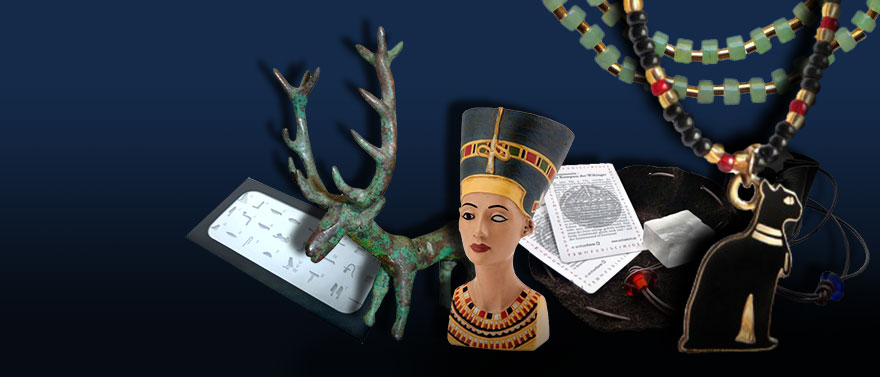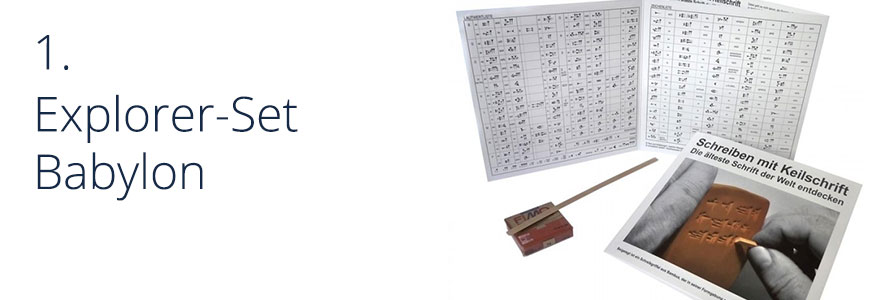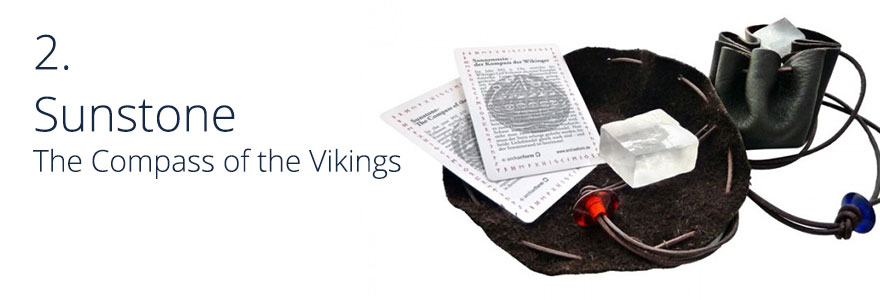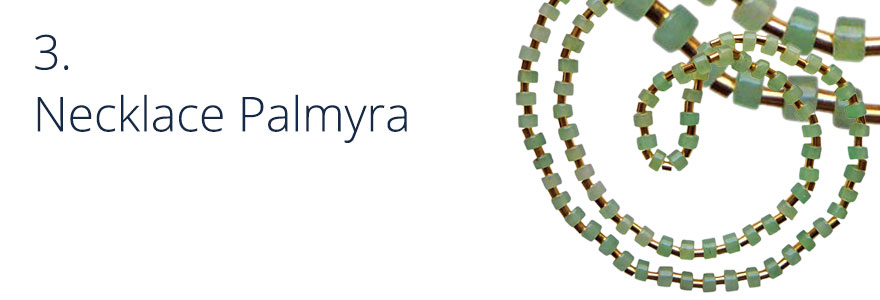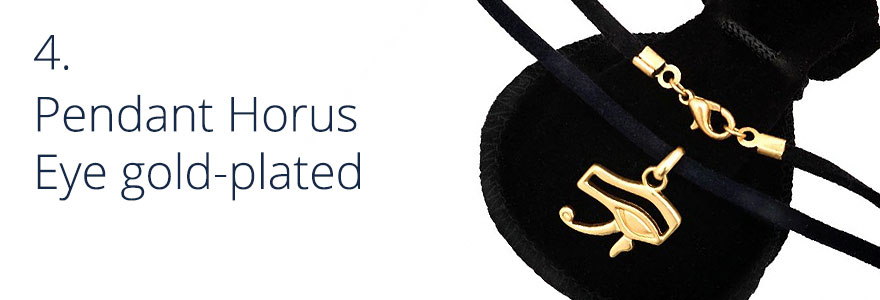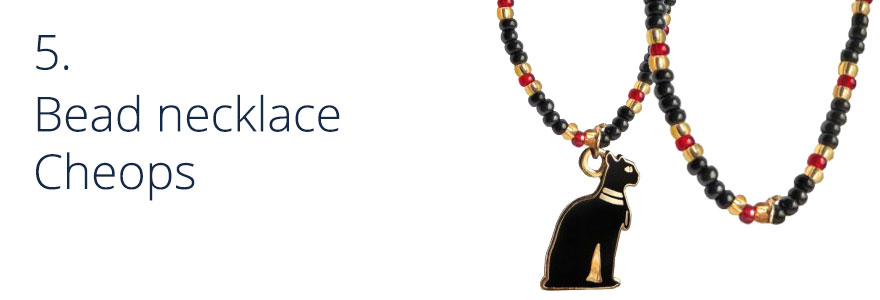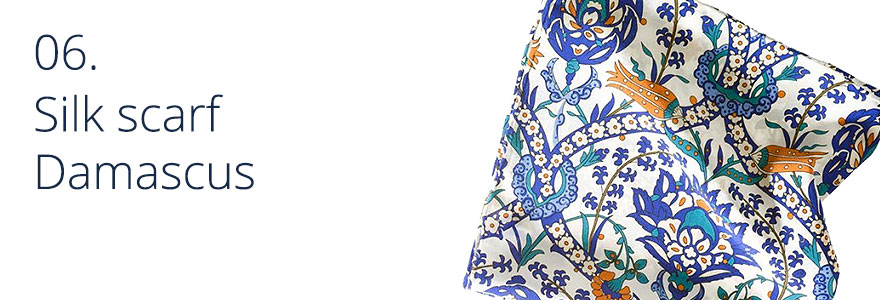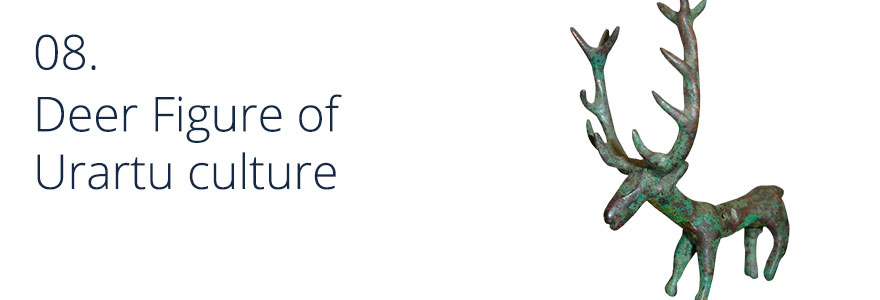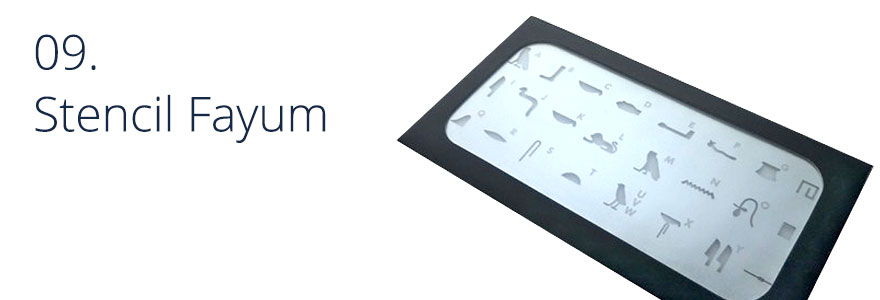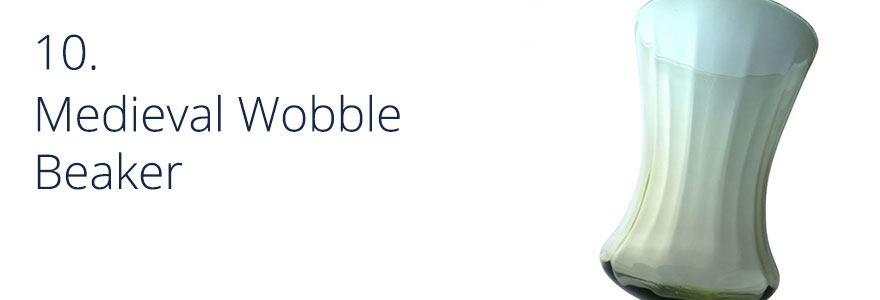View here the complete selection:
Discover the oldest writing of the world! Cuneiform is a cultural technique of the Ancient Near East and belongs to the historic legacies on which our own culture is based upon. Try out yourself how people used to write in the ancient capitals of Babylon, Niniveh, Persepolis or Jerusalem. Added to the set are a piece of Fimo modelling compound and a stylus made of bamboo which design follows its antique models. With the help of the also added sign lists everyone will be able to transfer any text from any language into Cuneiform writing.
In the year 992 AD the Viking Leif Eriksson reached America as the first European. For a long time scientists have puzzled over the question how the Vikings with their dragon boats managed to navigate on the open sea. This secret is now revealed: Magic Sun Stones from Calcite showed them the way. With a stone like this the position of the sun could be determined with high precision, even under low light conditions and at dusk. The sunlight is refracted in the mineral depending on its alignment to the celestial bodies. Looking through the stone you can see two light beams. The stone must now be turned until both beams are equally strong – and the position of the sun is determined!
The Sunstone, a clear calcite crystal in its natural form, in packed in a leather pouch together with an explanation card.
The necklace is made of fine polished aventurine in classical cylindrical shape, combined with gold-plated metal elements made of sterling silver, 24 carat gold-plated. Inspired by shapes and colours of the ancient world and with its flowing segments it had been created into a flattering and fashionable piece of jewellery.
The symbol is meant to restore order and happiness wherever chaos and destruction have taken place according to the Ancient Egyptian ideals. The sign was put on all places where the eye was meant to watch over mankind with its magic power. The gold-plated metal pendant has a width of 1.7 cm.
Necklace made of high quality glass beads (“rocailles”), which mimic the colour scheme of Egyptian originals. The enamelled necklace pendant shows the Egyptian cat goddess Bastet. The goddess was worshipped as a symbol of love and joy, dance and music, and of festivals.
After an Islamic tile from Turkey, made in the 16th century. On this silk shawl blue blossoms, red buds and green tendrils interweave themselves skilfully to a recurrent, infinite pattern. 100% silk crepe de chine, handrolled, 150 x 50 cm.
The ancient Egyptian queen Nefertiti was the beautiful spouse of Akhenaton, the famous ruler of the 18th dynasty in Egypt, and her name, too, praises her extraordinary beauty: „The beautiful one who comes along“. In addition to it she was a woman with considerable power and political influence attested by numerous depictions of her. Reduced to scale. The height of the hand-painted figure is 12 cm.
Replica of a deer made of bronze, found in a lavishly decorated tomb dating from the Early Iron Age Urartu culture. This figure was originally attached to a wooden staff. To the bellicose Asiatic equestrian people the deer was a symbol of power, fighting spirit and also for fertility. Depictions of this kind are attested in many cases. The kingdom of Urartu controlled the lines of communication between Asia and the Mediterranean, it stood to benefit from the rich ore deposits in the Caucasus mountains and was renowned for its horse rearing and cattle breeding. For the fabrication of the replica on hand a true to scale moulding of the original find was made to begin with. According to this model a casting mould was generated in which the single pieces were cast in metal one by one. Finally each item was painted by hand thus rendering the patina of the prototype. 9th-7th century B.C. Inventory number of the original figure, MVF Berlin: XIc 5029. Height of figure: 9 cm / 3.5 inch
The ancient Egyptian hieroglyphic alphabet in the form of a stencil allows you to write individual letters. Our alphabet is descended from a Phoenician writing system, of which many researchers believe it goes back to characters that had been developed from Egyptian hieroglyphs. The dimensions of the stainless steel stencil are 13.5 x 6.5 cm.
This replica of a medieval glass beaker is made out of forest glass and manufactured in traditional handicraft by a Bohemian glass handicraft business. The beaker’s bottom is rounded, so it wobbles when standing, which means it can be put down only upside down – hence the name. This design was chosen in the early Middle Ages in order to ensure that the person using the glass would escape the danger of poisoning of the drink. The dimensions of the glass are 10.5 x 7 cm.
